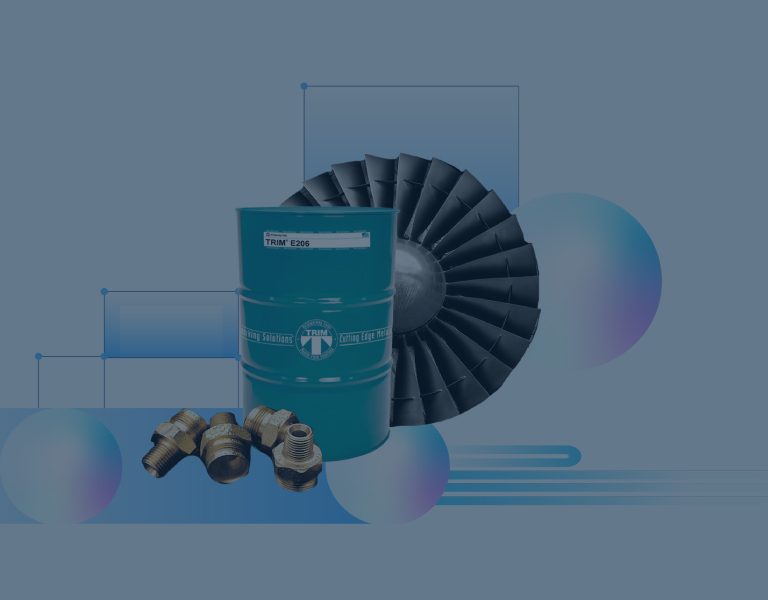Digital transformation isn’t just about adopting new technologies—it’s about leveraging them strategically to drive organizational goals. This requires a well-defined roadmap, strong governance, and a focus on change adoption. Without these elements, even the best technology can fall flat, leaving companies with investments that fail to deliver the expected impact.
This is the story of how a US-based metalworking fluids company embarked on a journey to unlock their digital potential. They realized that real transformation wasn’t just about new systems, but about a mindset shift and embracing a company-wide commitment to change.
Where it all began: A vision without a clear path
The company had already made significant strides in modernizing its technology stack. They had invested in an Enterprise Resource Planning (ERP) system, digitized years of historical data into modern systems and applications and begun exploring a unified data strategy. On the surface, they appeared to be on the right track.
Yet, something wasn’t quite working:
- Systems weren’t talking to each other—different departments operated in silos, leading to inefficiencies and duplicated efforts.
- Processes were inconsistent across regions—manual workflows slowed down operations, making it difficult to scale.
- Data was fragmented—without a robust data governance framework, accessing meaningful insights was challenging.
- AI and cloud considerations lacked direction—while they understood the benefits, there was no clear roadmap for implementation.
- An overload of applications—multiple systems, some with overlapping functionalities, created complexity and unnecessary costs.
The leadership team knew they needed to take action. They didn’t just want incremental improvements; they wanted clarity, direction, and a strategic plan to drive their digital journey forward.
The turning point: Taking a holistic approach
Realizing that their challenges extended beyond individual systems, they engaged Fortude’s Digital Advisory team for a deeper, more strategic evaluation. Fortude conducted an enhanced version of the Digital Maturity Pulse assessment, with a greater focus on the areas that were identified as business critical for the organization based on the pre-assessment findings. The assessment was based on Fortude’s Digital Maturity Model, which evaluates an organization holistically across various dimensions – customer, strategy, technology, operations, people & organization, and data. With an increased intensity and scope compared to the standard Pulse, this enhanced version is called Pulse 7x and was specifically tailored for the customer.
This is where Fortude’s expertise came into play. Through the Pulse 7x Assessment, we evaluated the company’s Digital Maturity Index (DMI) and found that they were at a state where their digital capabilities existed but were not yet standardized, optimized, or scalable. Simply put, there was a digital vision and foundational elements, but it lacked a clear path and structure.
To bridge this gap, Fortude’s team of experts from across enterprise architecture, data and analytics, AI, and cloud ERP worked closely with the company’s leadership. The collaboration resulted in prioritizing initiatives that would deliver the most impact, identifying dependencies to streamline execution, and aligning technology investments with business objectives to drive measurable results.
Key findings & roadmap for transformation
The assessment revealed several critical gaps, highlighting areas that required immediate attention. Based on these findings, a structured roadmap was developed—prioritizing initiatives while considering interdependencies and enterprise-wide impact:
- Governance & compliance – Inconsistent decision-making stemmed from the absence of clear policies on data governance, cybersecurity, and AI. Strengthening governance frameworks was provisioned in the roadmap to ensure regulatory compliance, security, and long-term scalability.
- Enterprise architecture – A lack of a structured technology blueprint hindered system integration and scalability. The roadmap recommended an enterprise-wide IT strategy to enhance interoperability and guided future technology investments.
- Process excellence – Manual workflows and inconsistencies across regions slowed operations and limited efficiency. The roadmap focused on process standardization and automation, ensuring business users were equipped to lead change initiatives.
- Data & analytics – Fragmented data and governance gaps made it difficult to derive meaningful insights. Addressing this, the roadmap provisioned a phased data strategy, starting with a strong data foundation and centralized governance before decentralization.
- Enterprise applications – Disconnected applications and overlapping functionalities created inefficiencies and unnecessary costs. A structured approach to application rationalization and ERP maximization was outlined to ensure streamlined, standardized global operations.
- AI & Cloud adoption – The company had already transitioned from Infor M3 to Infor CloudSuite Chemicals with Fortude’s support. However, optimization of CloudSuite functionalities and a regional rollout were critical next steps. The roadmap provisioned a phased approach—focusing on refining CloudSuite capabilities, ensuring seamless adoption across regions, and strategically integrating AI and cloud services for scalability.
- Managed services & benefit realization – The absence of a structured mechanism to measure digital initiatives made it challenging to align IT investments with business objectives. The roadmap incorporated governance models and benefit realization frameworks to ensure measurable, business-aligned outcomes.
With these insights, the company gained much-needed clarity, allowing them to focus their efforts on the right priorities and drive meaningful, enterprise-wide transformation.
What’s next? A journey, not a one-time project
Digital transformation isn’t a one-time project; it’s a continuous journey that requires governance, oversight, and adaptation.
With a clear roadmap in place, they are now positioned to:
- Strengthen governance and improve data visibility across regions.
- Streamline process efficiency and enhance system adoption.
- Leverage AI and cloud to drive automation and agility.
- Maximize the value of existing applications before acquiring new solutions.
- Establish a global digital architecture that supports scalability and innovation.
Further, the success of the roadmap resulted in true transformation which brought about a fundamental shift in mindset and culture as well. Transformation is most effective when driven from the top. When leadership aligns with the digital vision and actively champions change, it fosters a culture of innovation, making adoption smoother and ensuring long-term success.
At Fortude, we believe in long-term partnerships—not just one-time engagements.
As a trusted digital advisor, we are committed to supporting our clients throughout their transformation journeys. This includes providing governance oversight to ensure policies evolve with changing business needs, offering strategic guidance on system adoption, AI, and cloud implementation, assisting with periodic reviews and updates to refine their digital strategy, and helping maximize the impact of their digital investments by aligning them with overall business goals. Our goal is to continue driving sustained value and ensuring our clients’ success.
By supporting clients beyond the assessment, we are committed to ensuring that every step of their digital journey is strategic and successful.
Success speaks volumes
Hear from the Vice President of Business Systems and Cyber Security of this company share insights from their digital transformation journey.
FAQs
The company struggled with siloed systems, inconsistent processes, fragmented data, and unclear AI and cloud adoption strategies. Their digital vision lacked a clear roadmap, leading to inefficiencies, duplicated efforts, and challenges in scaling operations effectively.
Pulse 7x provided a deep dive into critical areas—governance, enterprise architecture, processes, data, and applications—revealing misalignments, inefficiencies, and opportunities for optimization. It helped assess the company’s digital maturity, identify priority initiatives, and develop a structured roadmap for scalable transformation.
The company strengthened governance, standardized processes, improved data visibility, optimized cloud adoption, and streamlined enterprise applications. They also aligned technology investments with business goals and established a structured approach to AI adoption and automation.
True transformation extends beyond technology—it requires continuous adaptation, strong governance, and cultural shifts. With leadership driving change and a long-term strategy in place, businesses can evolve with market demands, optimize investments, and sustain innovation-driven growth.
Subscribe to our blog to know all the things we do


